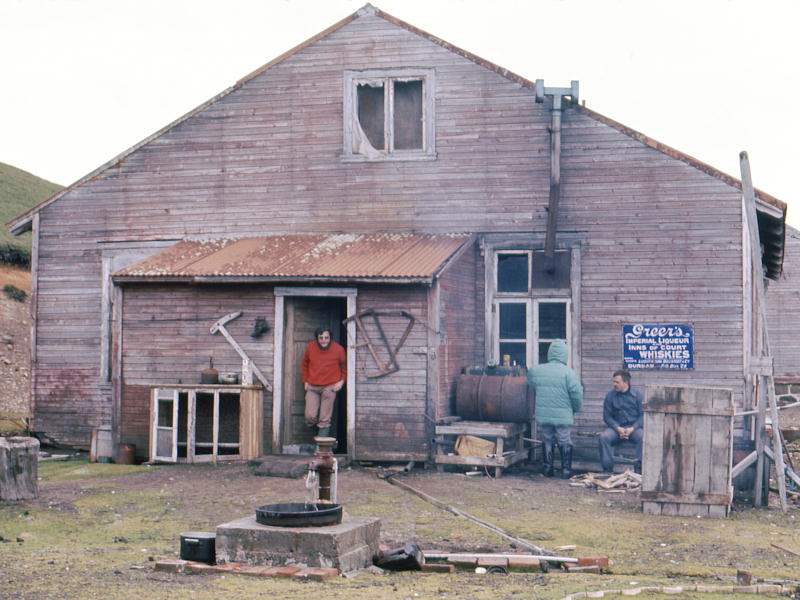Photo
album: "Port Jeanne d'Arc (1)"
Fly
over a photo with the mouse to enlarge it
Click
on a photo to open it in a new window
Two
days after the first ARAKS launch, on January 28th 1975, we are
finally permitted to take a two-day rest. We are going on a trip inside Golf of
Morbihan. We will sail on a barge to Port Jeanne d'Arc, former Norwegian whaling
station, where we will stay overnight. On the way to Port Jeanne d'Arc we will
stop at Isle Longue and the next day, on the way back, we will make a short stop
at Isle Haute.
 |
On January 28th 1975, we
are going on a trip, on a barge, inside Golf of Morbihan. |
 |
We leave Port-aux-Franšais (reference
mark 1) on January 28th 1975. We stop a first time at
Port-Bizet (reference mark 2), on Isle Longue where sheep are bred. We
proceed to Port Jeanne d'Arc (reference mark 3) where we stay overnight.
The barge will come back to fetch us the next day. On the way back, we
stop at Isle Haute (reference mark 4) where mouflons as well as a herd of
reindeer have been brought in. It is also possible to see, at the right of
the map, at the extremity of peninsula of Prince de Galles, Pointe Suzanne
which has been mentioned in former pages.
|
 |
This plaque is attached to the
cabin at Port-Bizet on Isle Longue. Bizet is the name of the breed of
sheep that lives on the island. It is a breed that origins from Massif
Central, in France. It was chosen because well suited to Kerguelen
environment. The flock lives unattended on the island. Once a year,
volunteers from the base come for the shearing times, mandatory operation
because their very thick fleece would interfere with their breeding. The
sheep leave Isle Longue only on their last journey, to supply with meat
Port-aux-Franšais where a small enclosure, near the farm, permits to keep
them a few days before they are slaughtered. |
 |
The cabin of Port-Bizet, used
mainly by the volunteers, at shearing times.
|
 |
Kerguelen cabbages. In spite of
its bitterness, the Kerguelen cabbage is edible and possesses
antiscorbutic properties which helped to save many sailors in the ancient
times. However, on the contrary to the other varieties of cabbages, it
must be eaten uncooked, because cooking gives it a very nasty taste.
Kerguelen cabbages were plentiful before the rabbits were brought in the
archipelago, it remains a small number of them in the rare isles where
these animals are absent or on steep slopes, out of reach of these little
herbivore animals. |
 |
We can see, here, the enclosure
which permits to separate a few sheep from the rest of the flock before
embarking them onto the barge that will transport them towards the
kitchens of Port-aux-Franšais. |
 |
We are leaving Port-Bizet where a
few passengers of the barge are staying for the night. We will meet them
again tomorrow when the barge will come back to fetch us. |
 |
We have landed at Port Jeanne
d'Arc. This is one of the wooden buildings built by the Norwegians in the
years 1900. It is in this house, still in good enough state, that we will
stay during the night. |
 |
We are now in front of the ruins
of the plant used by the Norwegians to process the whales. The factory was
operative between 1900 and 1930 roughly, with an interruption during the
first World War. |
 |
Whaleboats, rowing boats which
were used to chase the whales and harpoon them. |
 |
A winch used to drag the whales
along a wooden slope up to the place where they were cut to pieces. We
perceive, in background, the vestiges of a wharf which permitted to get
onto the ships. |
 |
The boilers where the pieces of
whales were heated to extract the oil. |
 |
Remains of a ruined building. |
Go
back
.
.
.
.
.
.
.








